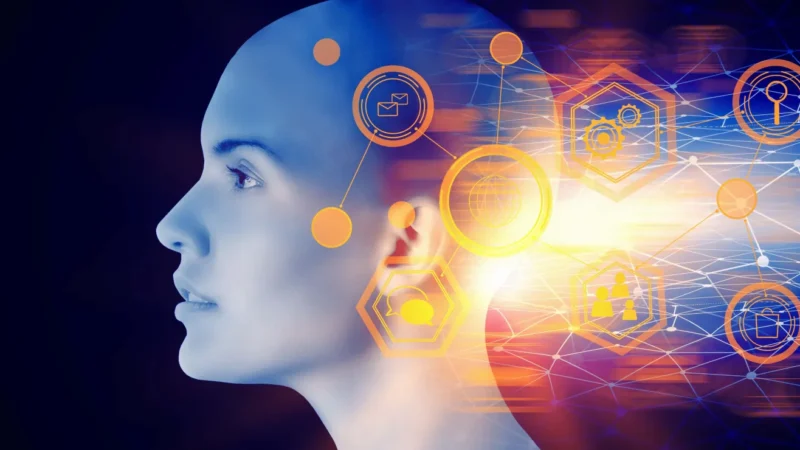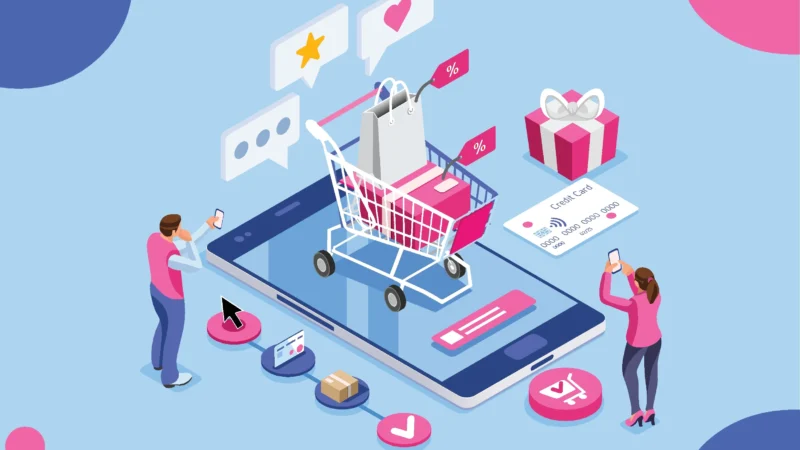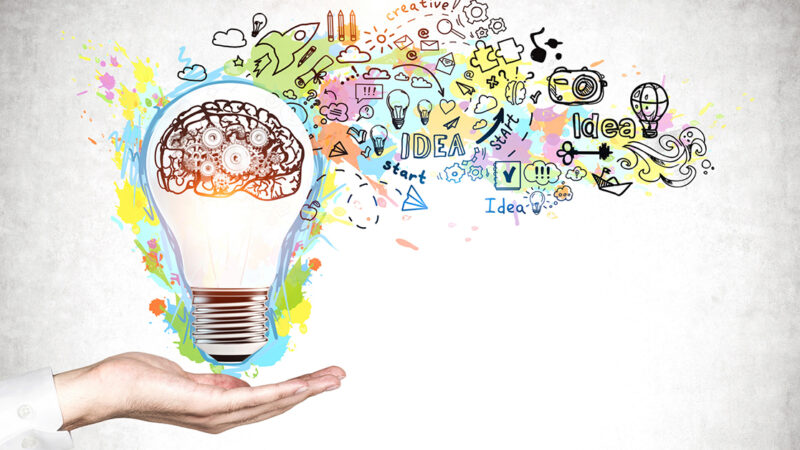What is Blockchain technology, How does it Work ?

What Is a Blockchain?
A blockchain may be thought of as a public, decentralized database or ledger. Among the nodes of a computer network. As a database, a blockchain maintains information in digital format electronically. In cryptocurrency systems such as Bitcoin, blockchains play a critical function in keeping a secure and decentralized ledger of transactions. A blockchain’s novelty is that it ensures the integrity and security of a data record and produces trust without the requirement for a trusted third party.
Blockchains arrange data differently than conventional databases. Blockchains hold data in blocks. When a block’s storage capacity is achieved, it is closed and joined to the preceding block, creating the blockchain. All new information after that block is combined into a new block and contributed to the chain.
A database typically organizes its data into tables, but as the name suggests, a blockchain contains its data into chunks (blocks) linked together. Decentralized, this data structure provides an irreversible chronology. This timeline includes finished blocks. Blocks are timestamped when added to the chain.
Key Takeaways
- Blockchains are encrypted shared databases that store data in blocks.
- New data goes into a block. After filling the league, it is linked to the previous block to arrange the data chronologically.
- Transaction ledgers are the most common usage of blockchains.
- Bitcoin uses blockchain decentralizedly, so users share power.
- Because decentralized blockchains are unchangeable, the data inputted is irreversible. This implies that Bitcoin transactions are forever recorded and viewed by anybody.
How Does a Blockchain Work?
Blockchain stores and distributes digital data without alteration. In this way, a blockchain creates immutable transaction records. Blockchains are distributed ledger technology (DLT).
The blockchain idea was initially suggested as a research project in 1991, and it preceded its first widespread use in use: Bitcoin in 2009. Since then, the usage of blockchains has grown exponentially, because many cryptocurrencies, applications for decentralized finance (DeFi), non-fungible tokens (NFTs), and smart contracts have been developed.
Blockchain Decentralization
Assume a company manages a database of customer account information with 10,000 servers. This firm controls all of these machines and their data in a warehouse. This generates a single failure point. What if that place loses power? What if its Internet fails? What if it burns down? What if a hacker deletes everything with one keystroke? Data is always lost or destroyed.
A blockchain distributes database data to several network nodes. This provides data correctness and redundancy. Bad actors cannot update records in one database instance since the other nodes are unaffected. One individual altering Bitcoin’s transaction record, other nodes will cross-reference and easily identify the node with false information. This strategy establishes a clear succession. Thus, no node may update its data.
Thus, history, including bitcoin transactions, is irreversible. A transaction list is an example (as with cryptocurrencies). A blockchain might store legal contracts, state IDs, or a company’s inventory.
A majority of decentralized network processing power must agree to validate fresh block entries or records. Proof of work or proof of stake prevents bad actors from validating fraudulent transactions or duplicating spending on blockchains (PoS). These techniques enable consensus even without a leader. Thus, history, including bitcoin transactions, is irreversible. A transaction list is an example (as with cryptocurrencies). A blockchain might store legal contracts, state IDs, or a company’s inventory.
Transparency:
Bitcoin’s blockchain is decentralized, so anybody may view transactions in real time by owning a node or using blockchain explorers. When blocks are confirmed and added, each node updates its chain. You could follow Bitcoin if you wanted.
Exchanges have been hacked, and Bitcoin clients lost everything. The hacker is anonymous, yet their Bitcoins are traceable. These assaults’ stolen Bitcoins would be traced.
The records recorded on the Bitcoin blockchain (as well as the majority of others) are, of course, encrypted. This implies that only the record’s owner may decode it and disclose its identity (using a public-private key pair). As a consequence, blockchain users may stay anonymous while maintaining transparency.
Is Blockchain Secure?
Blockchain provides decentralized security and trust in many ways. New blocks are always chronological. They always terminate the blockchain. The blockchain is updated whenever a new block is added to it, it’s very impossible to modify its contents without network consensus. Each block contains its hash, the hash of the previous block, and the date. A mathematical function generates hash codes from digital data. That information changes the hash code.
A hacker with a blockchain node wants to modify a blockchain and steal bitcoin. They’d lose sync if they updated their copy. This copy will stand out when everyone compares their papers, invalidating the hacker’s chain.
The hacker must hold and modify 51% or more of the blockchain copies to become the majority copy and the agreed-upon chain. Due to the different timestamps and hash codes, this attack would need a lot of money and resources.
Due to the size and pace of many cryptocurrency networks, such a feat would be too expensive. This would be expensive and ineffective. Network members would notice such major blockchain modifications. The network would then undergo a hard fork to a chain that is not harmed.This would devalue the targeted token, making the assault pointless because the bad actor now holds a worthless asset. Bad actors attacking the next Bitcoin split would do the same. It’s meant to make joining the network more profitable than attacking it.
Bitcoin vs. Blockchain
In 1991, researchers Stuart Haber and W. Scott Stornetta introduced blockchain technology to prevent document timestamp manipulation. Blockchain’s first real-world use came in January 2009 with Bitcoin’s debut.
Blockchains underpin Bitcoin. Satoshi Nakamoto’s research paper called Bitcoin “a new electronic monetary system that’s fully peer-to-peer, with no trusted third party.”
Remember the blockchain can hold any quantity of data immutably, not only Bitcoin payments. As said, this might include transactions, election votes, products inventory, state identifications, residency documents, and more.
Tens of thousands of projects are trying to harness blockchains for social good, such as secure voting in democratic elections. Blockchain immutability makes fraudulent voting harder. A voting mechanism might give each person a currency or token. Voters would send their token or cryptocurrency to the wallet address of their preferred candidate. Blockchain removes human vote counting and the risk of tampering with physical votes since it is transparent and traceable.
Blockchain vs. Banks
Blockchains have been hailed as a disruptive force in the financial industry, particularly in the payment and banking activities. Nevertheless, banks and decentralized blockchains are radically unlike.
To illustrate how banks vary from blockchain, let’s compare the banking system to Bitcoin’s blockchain implementation.
How Are Blockchains Used?
As is now common knowledge, blocks on the Bitcoin blockchain hold information about monetary transactions. There are already over 10,000 other cryptocurrency systems operating on blockchain. However, it turns out that blockchain is also a trustworthy means to store data about other sorts of transactions.
Walmart, Pfizer, AIG, Siemens, Unilever, and a multitude of other corporations have already used blockchain technology. IBM, for instance, has developed the Food Trust blockchain to track the transit of food supplies to their destinations.
Why do you do this? In the food industry, there have been several outbreaks of E. coli, salmonella, and listeria, in addition to the unintentional introduction of hazardous items. In the past, it took weeks to identify the source of these epidemics or the food-borne illness they caused. Using blockchain, marketers can follow the journey of a food product from its origin, through each trip it takes to its ultimate destination. If a meal is discovered to be tainted, it may be tracked all the way back to its point of origin. In addition, these firms can now see everything else it may have interacted with, enabling the issue to be identified far sooner and perhaps saving lives. This is a one example of blockchain implementation, however there are other alternative methods.
Banking and Finance
Banking may gain most from blockchain integration. Monday through Friday is the work week for financial institutions. It’s 6 o’clock on Friday night and you want to deposit a cheque you wrote., it’s possible that the money won’t be available to you until Monday morning. Due to the number of transactions banks need to settle, even if you deposit during business hours, it may take one to three days to check. Blockchain never sleeps.
Consumers may get their transactions completed in 10 minutes—the time it takes to add a block to the blockchain—by incorporating blockchain into banks. Blockchain allows banks to securely transfer payments faster. In stock trading, the settlement and clearing procedure might take three days (or more if dealing overseas), freezing money and shares.
Even a few days of money in transit may cost and jeopardize institutions due to its enormity.
Currency
Blockchain underpins Bitcoin. The Fed controls the dollar. This central authority arrangement gives banks and governments control over users’ data and cash. User data is at danger if a bank is hacked. The client’s currency may be at danger if their bank fails, or their nation is unstable. In 2008, taxpayers rescued numerous failed banks. These concerns inspired Bitcoin.
Blockchain decentralizes Bitcoin and other cryptocurrencies by running on a network of computers. This minimizes risk and decreases processing and transaction expenses. It is also possible that it will enable countries whose currencies are unstable or whose financial infrastructures are lacking with a more stable currency that has a wider range of applications and access to a greater network of local and international business partners.
For people without state identity, bitcoin wallets are particularly useful for savings and payments. Some nations have war-torn governments or no ID infrastructure. Such nations may not have savings or brokerage accounts, making wealth storage impossible.
Healthcare
Blockchain can safeguard patient medical records. A signed medical record may be recorded into the blockchain, giving patients confidence that it cannot be modified. Encrypting and storing personal health data on the blockchain with a private key ensures privacy.
Property Records
Recording property rights with your local Recorder’s Office is tedious and inefficient. Today, it is required that a physical deed be provided to an employee of the government at the local recording office. This person will then physically put the deed into the central database and public index of the county. Property disputes must be settled with the public index.
This technique is expensive, time-consuming, and error-prone, making property ownership monitoring less efficient. Blockchain might remove the need to scan papers and locate local recording office data. Owners may trust their deed is correct and permanently recorded on the blockchain.
In war-torn nations or places without government, finance, or Recorder’s Offices, property ownership might be difficult to verify. If a community can use blockchain, property ownership timelines can be transparent.
Smart Contracts
A blockchain-built smart contract may verify, negotiate, or mediate a contract agreement. Users accept smart contract terms. When certain requirements are satisfied, the agreement is automatically executed.
A prospective renter wants to lease an apartment via a smart contract. The renter receives the unit door code after paying the security deposit. The renter and landlord would transmit their parts to the smart contract, this would save the door code and automatically trade it for the security deposit on the first day of the lease. In the event that the landlord does not give the door code by the start date of the lease, the smart contract will refund the security deposit. The costs associated with using a notary, mediator, and attorney would be eliminated as a result.
Supply Chains
Suppliers may utilize blockchain to track the sources of products they buy, like IBM Food Trust. This would enable firms to authenticate their goods and labels like “Organic,” “Local,” and “Fair Trade.”
Forbes noted that the food sector is increasingly using blockchain to monitor food safety from farm to table.
Voting
As indicated, blockchain might enable contemporary voting. In West Virginia’s November 2018 midterm elections, blockchain voting reduced election fraud and increased voter participation. Blockchain would make voting virtually difficult to mess with. The blockchain system would reduce election staff and provide near-instant results while maintaining transparency. This would prevent recounts and electoral fraud.
Pros and Cons of Blockchain
Blockchain’s decentralized record-keeping potential is almost limitless despite its complexity. Blockchain technology may have uses beyond those listed above, including improved user privacy, security, processing costs, and mistakes. There are drawbacks.
Pros
- Decentralization makes it difficult to manipulate with
- Transactions are safe, private, and efficient
- Transparent technology
- Provides a banking alternative and a mechanism to protect personal information for residents in unstable or undeveloped nations
Cons
- High technical cost of mining bitcoin
- Low transactions per second
- History of unlawful usage, such as on the dark web
- Uncertain regulation by country Limited storage
Benefits of Blockchains
Accuracy of the Chain
Thousands of computers authorize blockchain transactions. This reduces human mistake and ensures reliable data. A network computer’s computational error would only affect one blockchain copy. For that mistake to propagate to the remainder of the blockchain, at least 51% of the network’s computers would have to make it—nearly impossible for Bitcoin’s massive and expanding network.
Cost Reductions
Consumers pay banks to authenticate transactions, notaries to sign documents, and ministers to marry. Blockchain reduces third-party verification expenses. Because banks and payment-processing firms execute credit card transactions, businesses pay a nominal charge. Bitcoin is decentralized and has low transaction costs.
Decentralization
Blockchain data is distributed. Instead, computers copy and distribute the blockchain. Every network computer updates its blockchain when a new block is added. Blockchain data is harder to mess with since it’s distributed over a network. Hackers would only compromise one copy of the blockchain if they got it.
Efficient Transactions
Centralized transactions might take days to settle. If you deposit a check on Friday night, you may not see the cash until Monday morning. Blockchain works 24/7/365, unlike financial institutions, which function five days a week. Transactions take 10 minutes and are secure after a few hours. Cross-border transactions, which take longer due to time zone differences and payment processing confirmation, benefit from this.
Private Transactions
Any Internet user may access the transaction history of several blockchain networks. Users can see transaction data but not user IDs. Despite popular belief, blockchain networks like bitcoin are only confidential.
The blockchain records a user’s public key when they conduct a public transaction. Personal data isn’t. If a person buys Bitcoin on an exchange that demands identification, their blockchain address is still connected to their identity, but a transaction does not expose personal information.
Secure Transactions
The blockchain network must verify transactions. Thousands of blockchain computers hurry to verify the purchase. The blockchain block contains the transaction after computer validation. Each block in the blockchain has its own unique hash in addition to containing the hash of the block that came before it.Editing a block alters its hash code, but not the block following it. This mismatch makes blockchain data changes difficult without notice.
Transparency
Most blockchains are open source. Its code is publicly available. This lets auditors check Bitcoin security. This also implies that Bitcoin’s coding and editing are uncontrolled. Thus, anybody may propose system updates. Bitcoin may be upgraded if most network users approve of the new code with the upgrade.
Banking the Unbanked
Blockchain and Bitcoin’s universality is its most significant feature. The World Bank estimates that 1.7 billion individuals do not have bank accounts or other financial storage. Most of these people reside in poor nations with cash-only economies.
These folks usually get cash. They must then hide this actual currency in their homes or other living spaces, making them vulnerable to robbery or violence. Bitcoin wallet keys may be written down, kept on a cheap phone, or remembered. These choices are probably easier to hide than cash beneath a mattress for most individuals.
Future blockchains want to hold medical information, property rights, and legal contracts as well as riches.
Drawbacks of Blockchains
Technology Cost
Blockchain is expensive, but it may reduce transaction prices. The bitcoin network’s PoW method needs a lot of processing resources. The bitcoin network’s millions of computers require almost as much electricity as Norway and Ukraine.
Users continue to utilize energy to verify blockchain transactions despite bitcoin mining expenses. Miners get enough bitcoin for their efforts when they add a block to the bitcoin network. Miners must be compensated to validate transactions on blockchains without cryptocurrencies.
Emerging solutions. Bitcoin farms use sun, wind, or fracking-site natural gas.
Speed and Data Inefficiency
Bitcoin exemplifies blockchain’s potential inefficiencies. Bitcoin’s PoW mechanism adds blocks to the network in 10 minutes. That pace limits the blockchain network to seven transactions per second (TPS). Ethereum outperforms bitcoin, but blockchain limits them. Visa, for example, processes 65,000 TPS.
Years have been spent on solutions. 30,000+ TPS blockchains exist. After an update that incorporates shading, On September 15, 2022, the merger of Ethereum’s main net and beacon chain is scheduled to take place, which is anticipated to allow up to 100,000 TPS. Network participation, congestion, and transaction speeds will grow.
Data storage is another concern. Blockchain scalability is largely affected by the block size argument.
Illegal Activity
Blockchain confidentiality protects users from hackers and maintains privacy, but it also facilitates unlawful trade and activities. The FBI took down Silk Road, a dark web illegal-drug and money laundering bazaar, in October 2013.
Tor Browser users may buy and sell illicit things in Bitcoin or other cryptocurrencies on the dark web. When opening an account, U.S. financial service companies must collect consumer information, authenticate identification, and check for terrorist groups. This method has pros and cons. It offers anybody access to bank accounts but also helps criminals trade. When most unlawful behavior is still done with untraceable cash, many believe that crypto’s beneficial applications, like banking the unbanked, outweigh its harmful uses.
Since Bitcoin is transparent and mature as a financial asset, illicit behavior has moved to other cryptocurrencies like Monero and Dash. Today, unlawful Bitcoin transactions are exceedingly rare.
Regulation
Crypto enthusiasts worry about government regulation. As Bitcoin’s decentralized network evolves, governments might conceivably ban cryptocurrency ownership or participation.
As big corporations like PayPal enable cryptocurrency, this issue has decreased.
What Is a Blockchain in Simple Terms?
Many cryptocurrencies community have voiced concerns about government regulation of cryptocurrencies. Governments might conceivably make it illegal to hold cryptocurrencies or take part in their networks, even though money is becoming more and more challenging—if not almost impossible—to put a halt to something like Bitcoin as its decentralized network expands.
This fear has been increasingly alleviated as large organizations such as PayPal have begun to permit the ownership of cryptocurrencies and the usage of cryptocurrencies on their platform.
How Many Blockchains Are There?
The number of active blockchains grows exponentially every day. In addition to the more than 10,000 active cryptocurrencies based on blockchain, there will be several hundred additional non-cryptocurrency blockchains by 2022.
What Sets a Private Blockchain Apart from a Public Blockchain?
A public blockchain, called an open or permissionless blockchain, allows anybody to join the network and set up a node without restriction. Because of how open they are, these blockchains need to be safeguarded using encryption and a consensus mechanism like proof of work (PoW).
On the other hand, a private or permissioned blockchain needs each node to be vetted before joining. The layers of security do not need to be as thick since nodes are presumed trustworthy.
What Is a Blockchain Platform
On top of an already existing blockchain infrastructure, users and developers may build new applications using a blockchain platform. Ethereum is one instance, which contains a built-in coin called ether (ETH). However, the Ethereum blockchain also enables the development of programmable tokens for initial coin offers (ICOs), smart contracts, and non-fungible tokens (NFTs). They are constructed around the Ethereum network’s architecture and are protected by nodes.
Users and developers may create new apps utilizing a blockchain platform on top of an existing blockchain infrastructure. One example is Ethereum, which has a built-in currency called ether (ETH). However, the Ethereum blockchain also facilitates the creation of non-fungible tokens, smart contracts, and programmable tokens for initial coin offerings (ICOs) (NFTs). They are all built using the Ethereum network’s design and are all node-protected.
Who Invented Blockchain?
Stuart Haber and W. Scott Stornetta, two mathematicians interested in implementing a system where document timestamps could not be altered, initially proposed the concept of blockchain technology in 1991. Cypherpunk Nick Szabo advocated utilizing a blockchain to protect the bit gold digital payment system in the late 1990s (which was never implemented).
The Bottom Line
Blockchain is finally establishing itself, in no little part because to bitcoin and cryptocurrencies, with several real-world uses for the technology now being deployed and researched. Blockchain, a phrase on everyone’s lips as an investor in the country, promises to reduce middlemen while increasing accuracy, efficiency, security, and cost-effectiveness in commercial and government activities.
It’s no longer a matter of whether legacy organizations will adopt blockchain technology—a question of when—as we get ready to enter the third decade of the technology. NFTs are becoming more and more prevalent nowadays, and assets are being tokenized. Blockchain will see significant expansion during the next decades.






